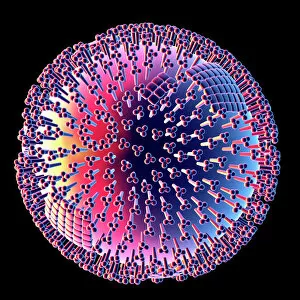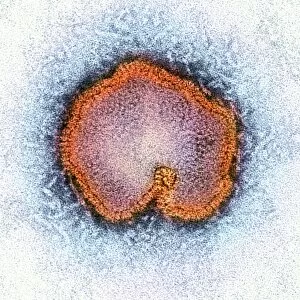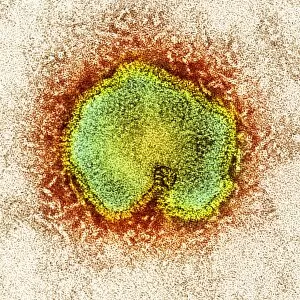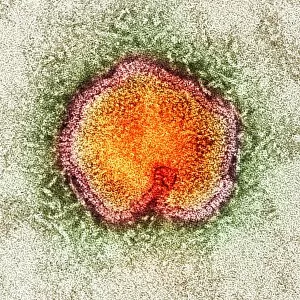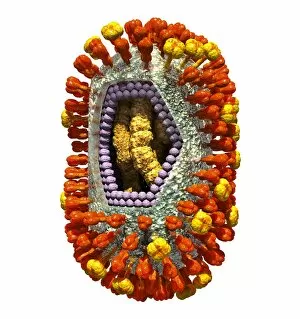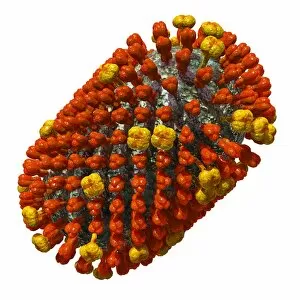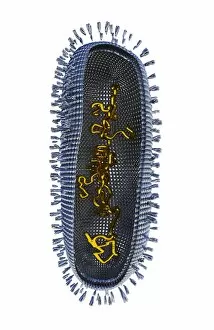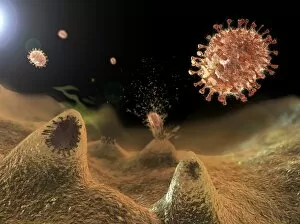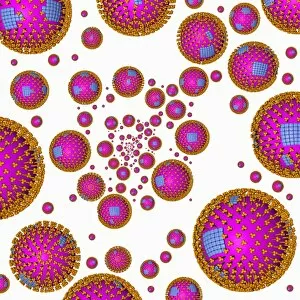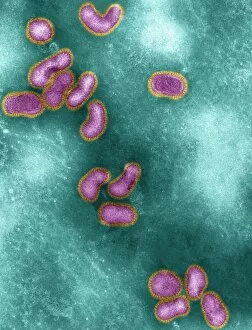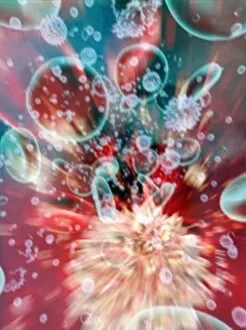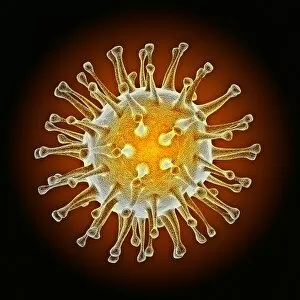Orthomyxoviridae Collection
Orthomyxoviridae, commonly known as the Influenza virus, is a microscopic entity that has plagued humanity for centuries
All Professionally Made to Order for Quick Shipping
Orthomyxoviridae, commonly known as the Influenza virus, is a microscopic entity that has plagued humanity for centuries. This computer artwork captures the essence of this notorious viral family, showcasing its intricate structure and ability to cause widespread illness. In this conceptual image, we witness the influenza virus in all its glory - a formidable force responsible for countless cases of flu worldwide. Its distinctive shape and composition are brought to life through vibrant colors and meticulous attention to detail. Zooming in further, we delve into the microscopic world where blood cells interact with these tiny invaders. The battle between host and pathogen unfolds before our eyes as the virus seeks to infiltrate and replicate within its human host. As we explore more conceptual images of this influenza-causing culprit, it becomes evident that it possesses an uncanny ability to adapt and evolve over time. Genetic evolution plays a significant role in shaping the behavior of this ever-changing foe, enabling it to evade immune responses and continue spreading among populations. A closer look reveals another facet - bird flu research. Scientists diligently study these avian strains in order to better understand their potential impact on human health. Through extensive analysis and experimentation, they strive towards developing effective prevention strategies against future outbreaks. Ultimately, Orthomyxoviridae serves as a reminder of our vulnerability in the face of infectious diseases. It urges us to remain vigilant against seasonal flu strains while also encouraging ongoing scientific efforts aimed at combating emerging threats posed by these elusive viruses. This captivating collection showcases various aspects related to Orthomyxoviridae or Influenza virus – from its visual representation through computer artwork and conceptual imagery depicting its impact on blood cells; genetic evolution driving its survival; bird flu research shedding light on potential risks; all serving as reminders for us humans about staying cautious during flu seasons while supporting continuous scientific endeavors fighting against such pathogens' emergence.

